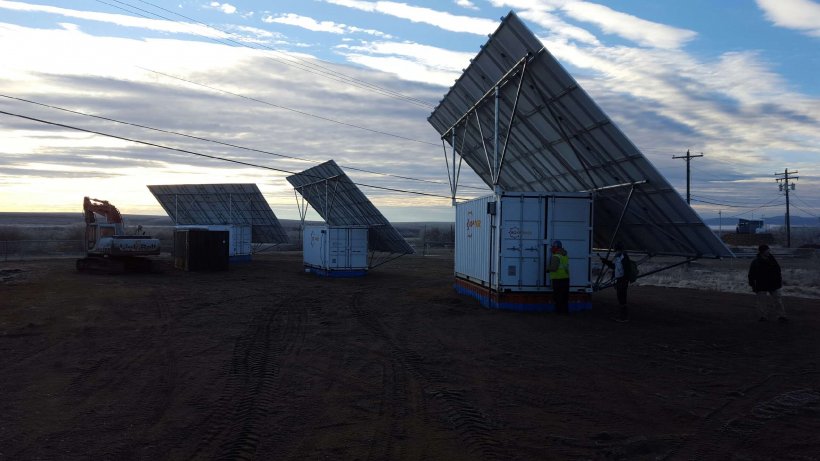Three sets of solar panels are pictured in Buckland, Alaska. (Photo by Givey Kochanowski, courtesy of DOE Office of Indian Energy)
I just returned from helping to host the Rural Energy Conference, where the Alaska Municipal League collaborated with the Denali Commission, Southeast Conference, and University of Alaska Fairbanks’ Alaska Center for Energy and Power to bring it back after a six-year hiatus. The energy and enthusiasm of the 500 attendees, many of whom had participated in prior conferences, was palpable. For others, it was their first experience — a vital opportunity to engage, learn, and share.
The timing was ideal, given the current landscape of significant federal investments, presenting both opportunities and challenges. Energy, like transportation and broadband, is a crucial focus for AML. While energy may not be our primary lane, it’s critical to our mission of strengthening local governments and improving conditions across communities. This was our first time as co-hosts, building on my experience with the Governor’s Energy Security Task Force.
A highlight was seeing the Alaska Energy Authority’s transition to a board of directors. Their involvement, alongside the governor’s office and the Legislature, fostered consensus-building on Alaska’s energy challenges. The governor’s leadership, paired with the Legislature’s role, will be key in delivering solutions. This event complements the Governor’s Sustainable Energy Conference, both working toward shared goals of driving investment and solutions.
The U.S. Department of Energy had a strong presence, highlighting their programs and priorities. A unique aspect for Alaska was the Arctic Energy Ambassadors – a program of the DOE Arctic Energy Office, administered by AML and delivered through the Denali Commission. These 12 ambassadors come from across the state with the purpose of advancing local and regional energy projects.
Rural utility operators and municipal and tribal officials expressed how valuable it was to have access to information tailored to their circumstances, thanks to input from partners like the Alaska Power Association. With 50 travel scholarships available, rural participation was a priority, ensuring many could attend who otherwise wouldn’t have been able to. The event wouldn’t have been possible without the support of dozens of sponsors, exhibitors, and partners.
Several themes emerged during the conference. First, many utilities are grappling with aging diesel powerhouses and bulk fuel issues, even as they push to add renewables and battery systems to microgrids. The challenge is finding funding not just for clean energy but for maintaining the security of these foundational systems.
Another theme was the rise of independent power producers, particularly as a tool for tribal self-determination. The key question is how these shifts can translate into community benefits, particularly in terms of affordability. There’s a lot of interest in how partners and communities will approach this to truly lower energy costs.
The “magic wand” question – what would you change if you could – brought out some key priorities. One was around Build America, Buy America, a federal policy aimed at boosting U.S. jobs and manufacturing, but which has led to supply chain delays and increased costs in rural Alaska. There was discussion around the possibility of an Alaska waiver, similar to what U.S. territories have. Another priority was reducing federal requirements for accessing new grant funds. Utilities want to get projects done, but the increasing number of hoops to jump through is making it harder. Streamlining permitting processes was also high on the list, along with the need for more investment in bulk fuel and diesel powerhouse upgrades.
Going into the week, I had a simple framework in mind for AML’s approach to energy: prioritize security, then affordability, then diversification. Much of what I heard reinforced this, though I quickly realized there’s no one-size-fits-all approach for all communities. It will take careful, quick planning and analysis, tapping into multiple funding sources, and strong partnerships to make the most of the opportunities ahead.
I’m already looking forward to the next time – and the progress we’ll have made by then.
GET THE MORNING HEADLINES.

